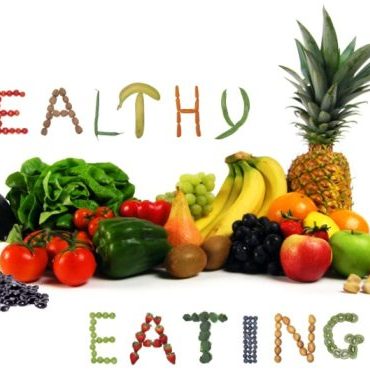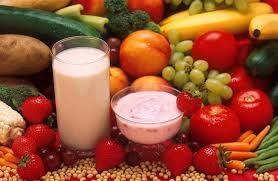 LOTL’s resident health guru Arlene dishes up her latest advice to your dietary questions.
LOTL’s resident health guru Arlene dishes up her latest advice to your dietary questions.
What can I eat other than food substitute shakes for weight loss? I need to lose at least 60kgs but cannot exercise with bad back and knees. I am back on optifast milkshakes but miss food. What can I eat other than salad?
You need to consume a balanced diet of a variety of foods to lose weight. Portion size is the major criteria you have to observe. You should not be getting bored with your food otherwise your eating pattern will not become established as a lifestyle and you will regain weight.
I suggest you consult a dietitian who can help you formalise an eating plan that you can adhere to and enjoy. You can use condiments, herbs and spices to make your food tasty.
You should be able to do some form of exercise eg. Water aerobics, Tai Chi are just a few suggestions. Losing weight should be a pleasant experience, not a drudge!
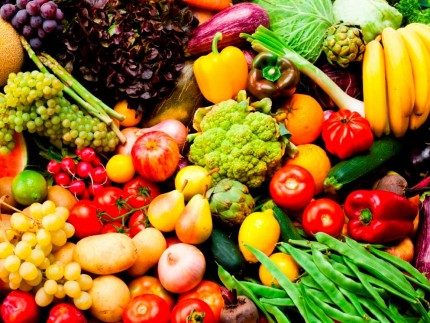 How do I go about following a low GI diet?
How do I go about following a low GI diet?
Starting a new diet is always tough, but following a low-GI diet may be easier than you think. You don’t have to immediately learn the whole glycaemic index — there are Web sites and books to help you there. You just have to pay attention to what you eat and how much you eat, which is a healthy way to go in any case.
GI is a scientific way of looking at how the carbohydrates in foods affect blood glucose, or blood sugar, levels. Scientists know that all carbohydrates raise blood sugar, but the GI takes this understanding one step further by figuring out how much a specific food raises blood sugar.
When you use the glycaemic index to plan your meals and snacks, you’re following a glycaemic index diet. It’s not a “diet” in the sense that there are specific meal plans you need to follow, lists of foods to eat and foods to avoid, and other types of rules that are all too familiar to people who’ve tried various weight-loss diet plans. Instead, the GI gives you a method for selecting foods that meet your specific needs and desires. The GI meals are simple.
Your body tells you it’s hungry and wants food. You must think of nutrition which is all about balance. Your meal needs to include protein (chicken, fish, lean red meat, soy products, eggs, nuts/seeds), vegetables, and starch (potato, pasta, rice, bread) to keep your body happy. If you throw in a glass of milk and some fruit on the side, your body will be even happier. Finally, you add in the glycaemic index for a complete picture. Because the glycaemic index applies solely to foods that contain carbohydrates, it applies only to the vegetable, starch, milk, and fruit portions of your meal. Theoretically, you already have an understanding of these foods’ nutritional values. The glycaemic index completes the picture by telling you how these foods will impact your blood sugar, which affects everything from your energy level to your food cravings.
You can use the glycaemic index to make gradual, lasting changes in your diet. You don’t have to know the actual glycaemic number of food to follow an overall low-glycemic diet. Simply choose foods with a low or medium glycemic ranking, and you can be confident that you’re making smart choices.
Many foods have already been tested for their glycaemic index, and that information is readily available at the Web site of the Glycaemic Index Foundation, the official database compiled by Australian researchers.
Start with small steps
Making just one or two changes in the foods you choose each day, switching from a higher- glycaemic food to a lower-glycemic one, for example, can lead to big differences over time.
The first step is to focus on simple changes that are easy to incorporate into your usual eating habits, such as the following: Include one low-glycemic food with every meal and snack.
Eat smaller portions of high-glycaemic foods. By cutting your portion of a high-glycaemic food such as instant mashed potatoes in half, you decrease that food’s impact on the overall glycaemic load of your meal. Swap out a high-glycemic food for one that’s low- to moderate-glycaemic. Instead of eating a smaller portion of instant mashed potatoes, you could try boiled new potatoes. Take your time adjusting to these changes in order to give yourself a better chance of sticking with them. Set a goal to include low-glycemic food at just one meal the first week. The second week, including low-glycemic food at a second meal. By the time one month has passed, you’ll find incorporating low-GI foods is a habit, not a chore. You’ll also notice improved health and mood benefits. As long as you start with small, reasonable changes in the foods you routinely eat, you’ll gradually consume more low-GI foods and fewer high-glycemic foods over time. The end result will be an overall moderate- to the low-GI eating pattern.
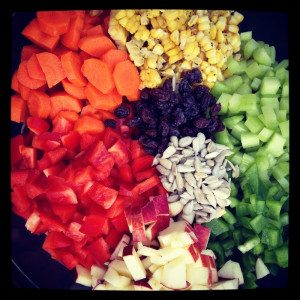 Is it bad to lose too much weight at once? 6 months ago I was weighing 121kgs at the age of 19. I decided to turn my life around and feel sexy and beautiful again. In two weeks I lost 20kgs and my skin is starting to sag. I now weigh 85kgs and just want to know if losing that much is bad for the short amount of time?
Is it bad to lose too much weight at once? 6 months ago I was weighing 121kgs at the age of 19. I decided to turn my life around and feel sexy and beautiful again. In two weeks I lost 20kgs and my skin is starting to sag. I now weigh 85kgs and just want to know if losing that much is bad for the short amount of time?
Your weight loss is extremely rapid. 10 kg in a week is not recommended. I cannot imagine how you achieved a loss of 20 kg in 2 weeks. If you do decide to lose weight so quickly you should be under the care of your doctor. Extreme weight loss can occur on a very low-calorie diet which is a physician-monitored diet that is designed for obese patients. In a very low-calorie diet, a commercially prepared formula, typically liquid shakes or bars, replaces all other forms of food. These diets typically consist of 800 calories per day or less. However, there are risks associated with losing too much weight too quickly.
People who have been on a very low-calorie diet for 4 to 16 weeks may experience negative side effects such as nausea, constipation, diarrhoea and fatigue. They can also form gallstones. Gallstones are more likely in people who are obese, but they occur frequently during the rapid loss of weight. This may be due to increased cholesterol levels in the gallbladder and a decreased ability of the gallbladder to contract and expel bile. There are medications available to help prevent the formation of gallstones during rapid weight loss.
Other dangers associated with rapid weight loss include lethargy, sleepiness and mood swings. There can be diminished short-term memory and academic performance. Testosterone levels and endurance can be lowered. There can be a decreased rate of growth and a lessened resistance to infection. The body may be less able to regulate temperature, which increases the risk of heat-related problems. Cardiac complications can also occur.
I recommend you see a qualified Dietitian who can monitor your weight and give you a sensible eating plan.
 How can I get enough protein on a vegetarian diet?
How can I get enough protein on a vegetarian diet?
It’s easy for vegetarians & vegans to get complete protein from plants. Just like everybody else vegetarians and vegans needs complete protein to get all the essential amino acids, so their bodies don’t fall into a negative protein balance – otherwise known as starvation. Protein Requirements vary depending on age, size, growth, health, physical activity, body type, pregnancy and lactation. Protein is essential for health, along with carbohydrates and fats.
We use amino acids as building blocks, to make protein, for every part of our bodies: blood, skin, cartilage, muscles and bones, hormones and enzymes. Our bodies can synthesize 16 of the 23 amino acids that we need. That leaves 8 essential amino acids which must come from the foods we eat.
The Essential Amino Acids Have Important Functions In The Body:
Isoleucine (Ile) – for muscle production, maintenance and recovery after a workout. Involved in hemoglobin formation, blood sugar levels, blood clot formation and energy.
Leucine (Leu) – growth hormone production, tissue production and repair, prevents muscle wasting, used in treating conditions such as Parkinson’s disease.
Lysine (Lys) – calcium absorption, bone development, nitrogen maintenance, tissue repair, hormone production, antibody production.
Methionine (Met) – fat emulsification, digestion, antioxidant (cancer prevention), arterial plaque prevention (heart health), and heavy metal removal.
Phenylalanine (Phe) – tyrosine synthesis and the neurochemicals dopamine and norepinephrine. Supports learning and memory, brain processes and mood elevation.
Threonine (Thr) monitors bodily proteins for maintaining or recycling processes.
Tryptophan (Trp) – niacin production, serotonin production, pain management, sleep and mood regulation.
Valine (Val) helps muscle production, recovery, energy, endurance; balances nitrogen levels; used in the treatment of alcohol-related brain damage.
Histidine (His) – the ‘growth amino’ essential for young children. Lack of histidine is associated with impaired speech and growth. Abundant in spirulina, seaweed, sesame, soy, rice and legumes.
Complete and Incomplete Protein: ALL plant-based foods have varying amounts of protein (plus carbohydrates, fats and other good things), and the body will combine proteins from all sources, to make ‘complete protein’. That’s true for everybody, veg or non-veg. The Term ‘complete protein’ means that all eight essential amino acids are present in the correct proportion. Foods from animal sources have complete proteins. Some foods from the plant kingdom, such as soy and quinoa, have a complete protein. The term ‘incomplete protein’ refers to foods that have all the essential amino acids but are low in one or more of them. That’s called the ‘limiting amino acid’.
Most plant foods have one or more limiting amino acids which limit the availability of all the other amino acids in the food. That’s why these foods are called ‘incomplete proteins. For example, the limiting amino acid in grains is usually lysine (Lys); in legumes, it can be methionine (Met) and tryptophan (Trp). So, the low level of Lys in grains is complemented by a higher level in legumes, and vice versa, to make ‘complete protein’.
However, vegetarians and vegans don’t need to worry about complete and incomplete protein. It is NOT NECESSARY for vegetarians and vegans to combine specific protein foods at one sitting to make a complete protein. Vegetarians need a healthy variety of good protein building foods, so the body can make enough complete proteins to be happy, even though you don’t need to worry about how and when you combine them.
What Vegetarians Should Eat To Get Enough
Protein: Each plant food has its own unique amino acid profile, from green leafy veggies to tubers, from barley to quinoa, from lentils to tofu, from macadamias to brazil nuts. By eating a variety of plant foods with ‘incomplete proteins throughout the day, vegetarians can easily get enough ‘complete protein.’
For lacto and ovo-Lacto vegetarians, any food can be complemented by the high-quality proteins in dairy products or eggs, but it isn’t at all necessary to include animal foods to get enough protein in your diet. Your body puts together amino acids from plant foods to give you complete protein throughout the day. For instance, the amino acids in beans & lentils are balanced by those in grains, nuts and seeds, and vice versa.
Vegetables and fruits also contribute significant amounts of protein. A one-cup serving of avocado, for example, has 3 grams of protein, and a medium potato with skin has 4 grams. Vegans and vegetarians can’t help getting all the essential amino acids, through eating different combinations of grains, legumes, nuts & seeds, vegetables & fruit several times throughout the day.
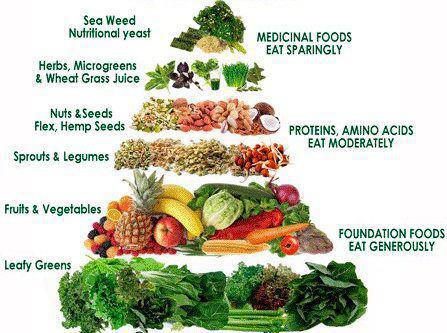 What would a sample menu plan look like for someone trying to manage high cholesterol?
What would a sample menu plan look like for someone trying to manage high cholesterol?
If you have high cholesterol or a history of heart problems, you have a higher risk of heart attack and stroke. You can lower your risk by making this small change – at each meal, choose foods that are healthy for your heart. Don’t make a list of foods you “shouldn’t” eat – the focus of most diets. Instead, increase your motivation by choosing a positive perspective. Each time you eat one of these healthier foods, remind yourself – with each bite, you’re lowering your chance of having a heart attack or stroke.
Recommended Related to Cholesterol Management
Eat more vegetables, fruits, and whole grains. The dietary fibre in these foods helps lower “bad” LDL cholesterol — one of the main contributors to heart attack and stroke. Put these on your plate with every meal to reach these daily amounts: At least 5 cups of fruits and vegetables and three 30g servings of whole grains a day.
Eat more legumes (beans), seeds, and nuts. Your weekly target: 4 servings of either nuts, seeds, or legumes such as black beans, garbanzos or lentils.
Put healthier fats to work for you. Cook with oils high in healthy, unsaturated fats (polyunsaturated and monounsaturated fats), such as canola, olive, and peanut oils. These oils are less likely than butter or lard to clog your arteries.
Use plant sterols found in fortified margarine, salad dressings, and yogurt. (Check the labels.) These plant compounds help lower “bad” LDL cholesterol.
Eat fish that are high in omega-3 fatty acids, including tuna, salmon, or sardines. This fat is a powerful defender against heart attack and stroke. Omega-3s seem to lower triglycerides, fight plaque in your arteries, lower blood pressure, and reduce your risk of abnormal heart rhythms. Eat lean, unprocessed protein. Make fish and chicken your mainstay. They help lower your chance of a heart attack and stroke, while red meats (beef, pork, and lamb) increase your risk.
I suggest you eat at least two 120g servings of fish a week. Tofu and soy protein are also lean sources of protein – and not just for vegetarians anymore. Avoid processed meat. Feed your body regularly. When you skip a meal, you’re more likely to overeat later. For some people, eating 5 to 6 mini-meals works best to limit calories, help control blood sugars, and regulate metabolism. For others, 3 meals a day works better, since extra meals can trigger overeating. See which approach works for you.
Maintain a healthy weight. Keep your portions small.
Breakfast: Morning tea: Lunch: Afternoon tea: Dinner: Supper:
Whole-grain cereal and low-fat yoghurt Fruit Whole grain sandwich with lean chicken and salad Fruit or nuts Piece of fish with salad and veges Fruit

